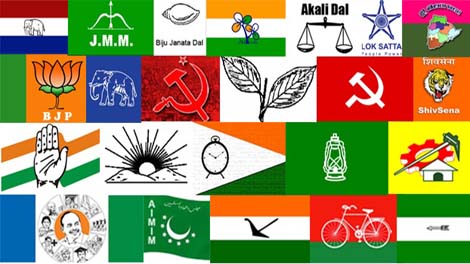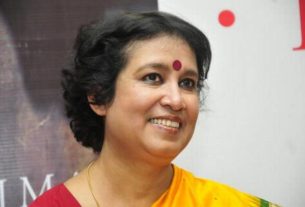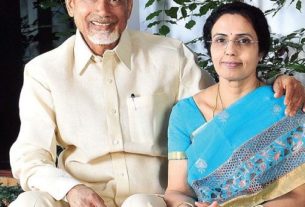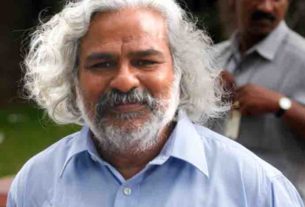Regional Parties: Are they king-makers and game-changers in Indian political scenario?
As India goes into the campaigning mode for the ensuing Lok Sabha elections, the hotly debated issue in political discourse these days is whether the regional parties are going to play king-makers and game-changers in the 2019 polls. The question cannot be ignored since the two main formations—the BJP-led National Democratic Alliance and the Congress-led opposition alliance—are making a determined bid to outdo each other in the numbers’ game. Both these formations are trying to rope in as many regional parties and even smaller parties as they can. New alliances are being worked out at the state-level by these two national parties even as the regional parties are flexing their muscle in their pursuit to play a greater role in the forthcoming general elections.
The regional parties had tasted power by dislodging the Indian National Congress in several States after the 1967 elections. They included Dravida Munnetra Kazhagam (DMK) in Tamil Nadu, Bangla Congress in West Bengal, Bharatiya Kranti Dal in Uttar Pradesh, Jana Kranti Dal in Bihar and Akali Dal in Punjab. Soon after the success of the Janata Party in forming the first non-Congress government at the Centre in the 1977 general elections held following the withdrawal of internal emergency, the Congress was ousted from power by Janata Party in several states in the Assembly elections too.
Telugu Desam came to power in Andhra Pradesh in 1983, Asom Gana Parishad in Assam in 1985, Samajwadi Party in Uttar Pradesh in 1993, Bahujan Samaj Party in Uttar Pradesh in 1995, Rashtriya Janata Dal in Bihar in 1995, Shiv Sena in Maharashtra in 1995, Trinamool Congress in West Bengal in 2011 and the list goes on.
Not only in the States but at the national level, too, the regional parties have played a pivotal role since 1989 when the era of single- party rule with absolute majority came to an end. National Front with V P Singh was propped up in 1989 by a group of regional parties led by N T Rama Rao with outside support of both the BJP and Left parties. The Congress Party’s minority government during 1991-96 under P V Narasimha Rao depended on support and defections from regional parties. United Front governments under two successive prime ministers H D Deve Gowda and I K Gujral were formed by regional parties with the outside support of the Congress Party during 1996-1998. National Democratic Alliance-I and II, led by BJP under Atal Bihari Vajpayee’s stewardship during 1998-2004, were supported by a string of regional parties from across the country.
The current NDA government also came to power in 2014 after the BJP contested the general elections in alliance with a few regional parties, though it is a fact that the saffron party secured absolute majority with 282 members in a House of 543. Now, three groups of regional parties are bracing up for the electoral battle of 2019: one group is aligning with the BJP, the other group is supporting the Congress and the third group seeks to be equidistant from both the BJP and the Congress. Some of these regional parties are well-entrenched in their respective States and a few others are trying to retrieve their lost ground.
It is interesting to note that the Election Commission of India’s list of political parties, as of now, includes seven national parties, 54 state (regional) parties and 2,261 registered parties. Among the chief ministers of 28 states and two union territories, 12 are from regional parties, 12 from the BJP, five from the Congress and one from the Left Democratic Front. In some of these States, the BJP or Congress have regional parties as their allies. In Jammu & Kashmir, the BJP and People’s Democratic Party (PDP) had shared power before the President’s rule was imposed in December 2018. The CMs from regional parties include
- N Chandrababu Naidu of Telugu Desam Party in Andhra Pradesh
- Nitish Kumar of Janata Dal (United) in Bihar
- Arvind Kejrival of Aam Aadmi Party in Delhi
- H D Kumaraswamy of Janata Dal (Secular) in Karnataka
- Naveen Patnaik of Biju Janata Dal in Odisha
- E K Palaniswami of AIADMK in Tamil Nadu
- K Chandrasekhar Rao of Telangana Rashtra Samithi in Telangana
- Mamata Banerjee of Trinamool Congress in West Bengal
The ECI’s list of seven national parties includes three regional parties which are largely confined to their respective states, namely BSP (UP), Nationalist Congress Party (Maharashtra) and AITC (West Bengal). The Communist Party of India and the Communist Party of India-Marxist are now mainly confined to three States. Only the BJP and the Congress have truly countrywide presence. Out of the 54 regional parties, 44 are confined to their respective States while 10 have presence in more than one State.
A cursory look at the current political scenario in the country ahead of the general elections presents a contrasting picture. BJP and Congress will have direct confrontation only in six states— Gujarat, Chhattisgarh, Madhya Pradesh, Himachal Pradesh, Uttarakhand and Rajasthan—which account for only 100 seats out of the 543 in the Lok Sabha. In the remaining 23 States and two out of seven union territories, the Congress and BJP would be engaged in triangular or multi-cornered contests with regional parties. In some States, the BJP and Congress would have regional parties as their allies.
In several such States, the BJP and the Congress are firming up seat sharing pacts with their respective regional allies in a serious bid to bolster up their numbers at the polls. However, in some States, the regional parties are acting as big brother to the BJP or Congress and in other States, the national parties are dictating to their regional allies. Both the BJP and the Congress want to confront each other with all their might in the no-holds-barred general elections which are crucial to determining India’s future in the decades ahead.
The line-up so far is like this. The JD (U), Shiv Sena, Shiromani Akali Dal and AIADMK are with the BJP while RJD, JD (S), NCP and DMK are aligning with the Congress. TRS, BJD, AAP, YSR Congress Party, Samajwadi Party and Bahujan Samaj Party are keeping away from both the national parties at present. TDP and Trinamool Congress are not averse to an understanding with the Congress at the national level rather than at the state level.
This clearly means that the electoral battle this time will not be similar to 2014 when the BJP, with smaller allies, almost made a clean sweep of the Lok Sabha seats in northern, central and western India and made small gains in north-eastern, eastern and southern India. BJP had won 249 out of 323 seats in these northern, central and western States and only 33 out of 220 seats in the north-eastern, eastern and southern states. The main factor for the poor showing of BJP in most of the eastern and southern States was that the regional parties were strong enough to fight back a resurgent BJP whereas in the northern, central and western States, the regional parties, alongwith the Congress, were swept aside by the saffron wave.
Just as in the case of Lok Sabha elections held in 1989, 1991, 1996, 1998, 1999, 2004 and 2009, the forthcoming polls are going to be a sum-total of what happens in each State rather than a nationwide aggregate. This means that the BJP, Congress and their respective allies and other regional parties will fight it out in various states and they have to pick up the seats from each State to add to their tally.
The BJP is unlikely to make any significant gains in the north-eastern and eastern India in the wake of the current agitation over the Citizenship Amendment Bill and the stand-off with Mamata Banerjee. The saffron party will be hard-pressed to stick on to its existing tally in southern states, especially after the break-up with the TDP in Andhra Pradesh on the one hand and the JD(S)-Congress alliance in Karnataka on the other.
Most of the opinion polls and political commentators have indicated that it would not be possible for the BJP to repeat its 2014 performance in the ensuing elections in the northern, central and western States, after its loss of power in three states—Chhattisgarh, Madhya Pradesh and Rajasthan and the better showing of the Congress in Punjab and Gujarat in the assembly elections. Making a clean sweep in Uttar Pradesh would be a tough proposition for the BJP as the SP-BSP alliance and the Congress are expected to snatch a number of seats from the saffron party.
Even otherwise, a recent data analysis of the Assembly polls in the last five years (2014-18) after the 2014 general elections indicates that the expected number of Lok Sabha seats in the 2019 elections based on the poll percentage of the major contending parties in the recent Assembly polls would be substantially different from the 2014 tally. The major losers will be BJP and allies while the big gainers will be the Congress and its partners. Regional parties may make modest gains.
Overall, the BJP and allies together are not expected to cross the simple majority mark. Their tally may be far less than the 272-mark. The Congress and its fewer allies are also not poised to reach their 2009 Lok Sabha poll tally. This means that the BJP, despite being the single largest party and the Congress, inspite of being the second largest party, would not be in a position to form the government on their own strength. Here, the role of the regional parties becomes obvious. They may hold the key to the government formation and thus play the role of king-makers or game-changers.
In this scenario, the regional satraps would be in a position to dictate to the national parties and even force one or the other national party to prop up one among them (regional satraps) as the next prime minister. There are quite many prime ministerial aspirants among the regional leaders, including current chief ministers and former CMs. Of the 14 successive Prime Ministers that India has seen in the last 72 years, six rose from the ranks of CMs, including Mr Narendra Modi and his predecessors Morarji Desai, Charan Singh, V P Singh, P V Narasimha Rao and H D Deve Gowda.
Three members of the Nehru-Gandhi family, Pandit Jawaharlal Nehru, Indira Gandhi and Rajiv Gandhi, ascended the PM’s chair directly. Others in this league included Lal Bahadur Shastri, Chandrasekhar, I K Gujral, Manmohan Singh and Atal Bihari Vajpayee. Rahul Gandhi, too, seems to be waiting in the wings to become PM directly. Incidentally, Mr Narendra Modi is the only BJP prime minister to complete his five-year term. BJP’s first Prime Minister, Vajpayeeji, was PM for a fortnight in his first innings, 19 months in the second innings, and 4 years and 7 months in his third spell.
(eom)



